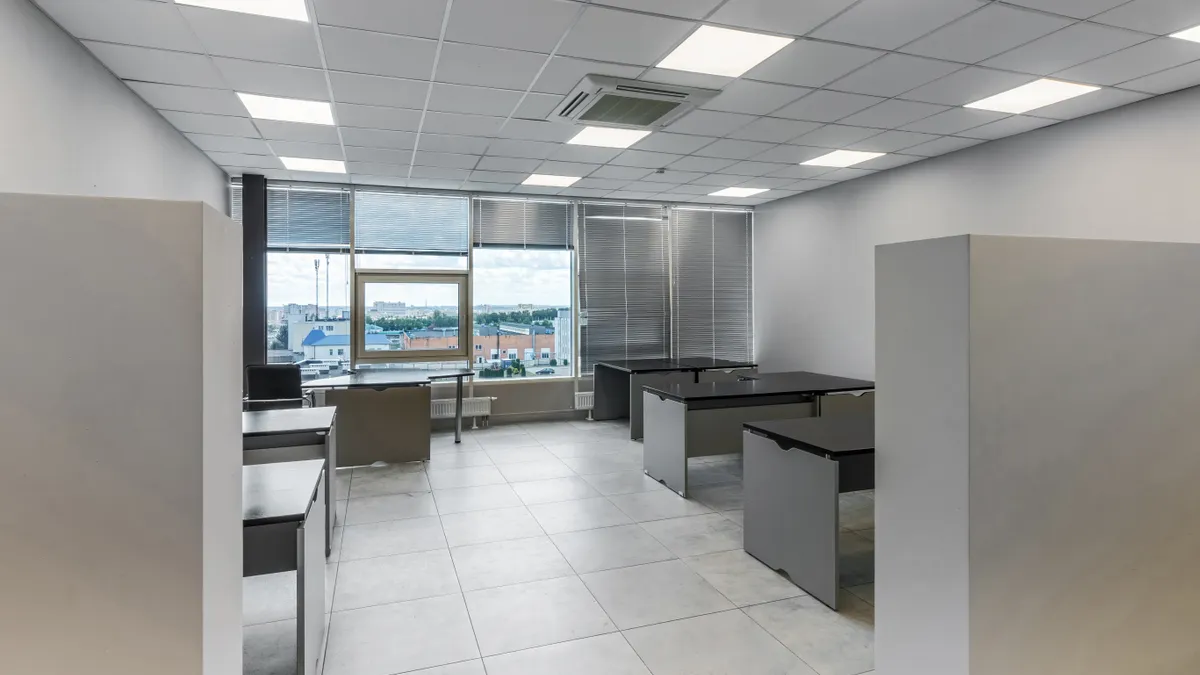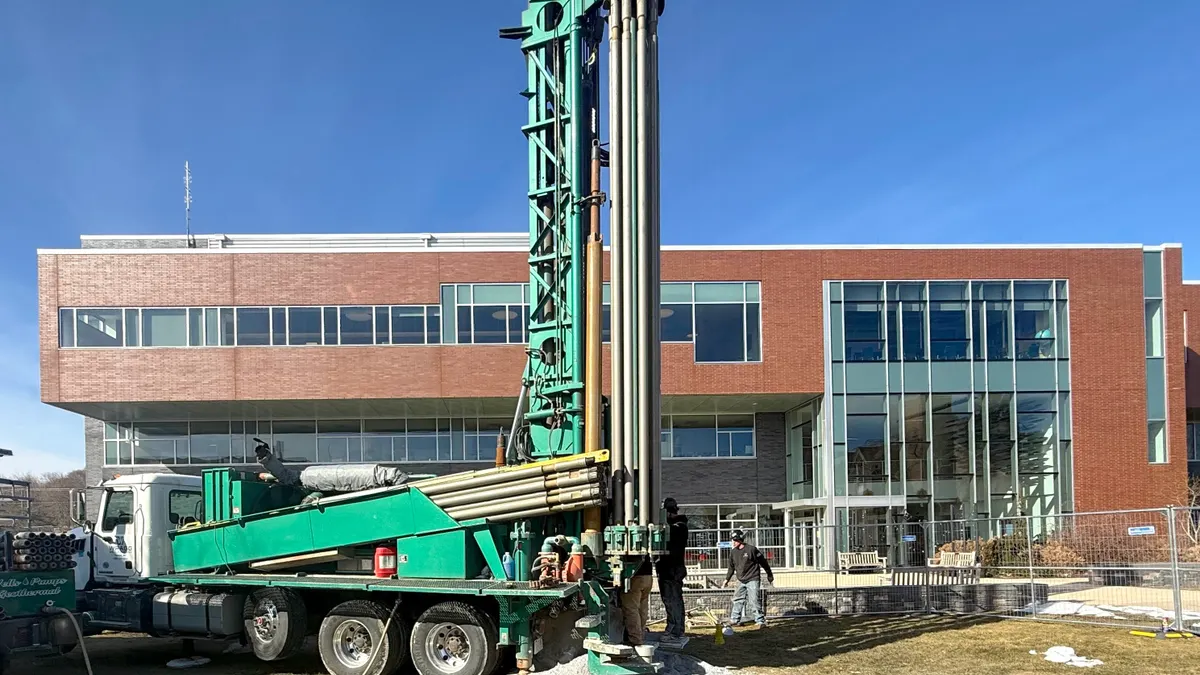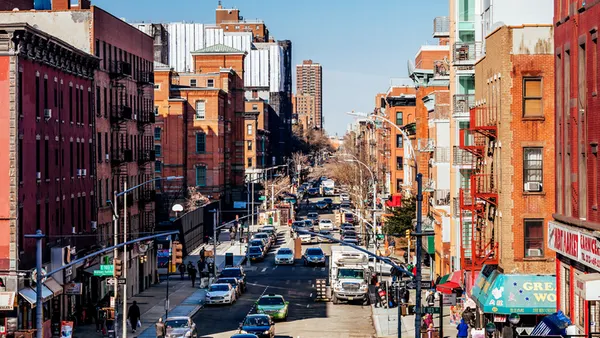Dive Brief:
- The U.S. General Services Administration, in concert with the U.S. Department of Energy’s Pacific Northwest National Laboratory, is providing federal buildings guidance on LED and controls.
- The guidance, released Thursday, lays out best practices for federal agencies to procure and use the most lifecycle cost-effective and energy-efficient lighting systems and technology currently available. The guidance outlines different types of LED fixtures and control options, the benefits of these systems for buildings and occupants, and where they can be best fitted.
- Lighting accounts for 10% to 25% of a building’s electricity consumption, depending on factors like the building’s age and lighting infrastructure, the GSA said in a news release. Switching to LED fixtures, however, can halve electricity use compared to that of traditional fluorescent lighting systems, while lighting controls can boost energy savings by up to 80%.
Dive Insight:
LED lights last up to 25 times longer and use up to 90% less energy than incandescent bulbs, according to the U.S. Energy Information Administration’s 2018 building energy consumption survey. Furthermore, LED fixtures can be up to 44% more efficient than T8 fluorescent lamps, according to a recent University of Michigan study.
The LED and controls guidance, released by the GSA’s Green Proving Ground program, aligns with the Bulb Replacement Improving Government with High-Efficiency Technology Act. Passed by Congress in 2022, the act requires the GSA to issue new guidance on how federal buildings can use the most lifecycle cost-effective and energy-efficient lighting projects.
The LED and controls guidance details financial inputs for lighting decisions, steps for designing a lighting control system, and LED lighting and system features, the GSA said in its release. The document also highlights retrofit options for interior LED lighting. Tubular LEDs, for instance, can be used in linear fluorescent fixtures or troffers that are most commonly found in federal buildings, it says, noting that tubular LEDs are lower cost, easy to install and can save 25% to 40% of lighting energy compared to fluorescent lamps.
While retrofit kits enable implementing new light sources, power supplies and optics in existing luminaire shells, requiring no new wiring, the report recommends luminaires or new fixtures for major renovations or redesign projects such as in instances where the ceiling is changed. It notes that luminaire sensors can be integrated with other systems, such as HVAC, for additional savings.
Additionally, power-over-ethernet lighting, which combines power and control signals in a single ethernet cable, can be deployed during major interior space redesign projects, the guidance document says.
Steps the document lays out for designing a lighting control system include reviewing energy code requirements; assessing whether additional energy savings or lighting performance capabilities are required; determining the final size and layout of lighting zones; selecting a system architecture; determining sensor and controller locations in luminaires or in the space for zone-based control; configuring control wiring; identifying communication protocols; and planning for retro- and re-commissioning by regularly updating lighting systems in alignment with system updates and building changes.
The guidance document notes that the GSA is required to comply with ASHRAE/IES Standard 90.1, which includes the need for occupancy and daylight sensors.
The GSA said the guidance supports President Biden’s 2021 executive order on Catalyzing Clean Energy Industries and Jobs Through Federal Sustainability and its associated Federal Sustainability Plan, which targets net-zero operational emissions across the federal real estate portfolio by 2050.












